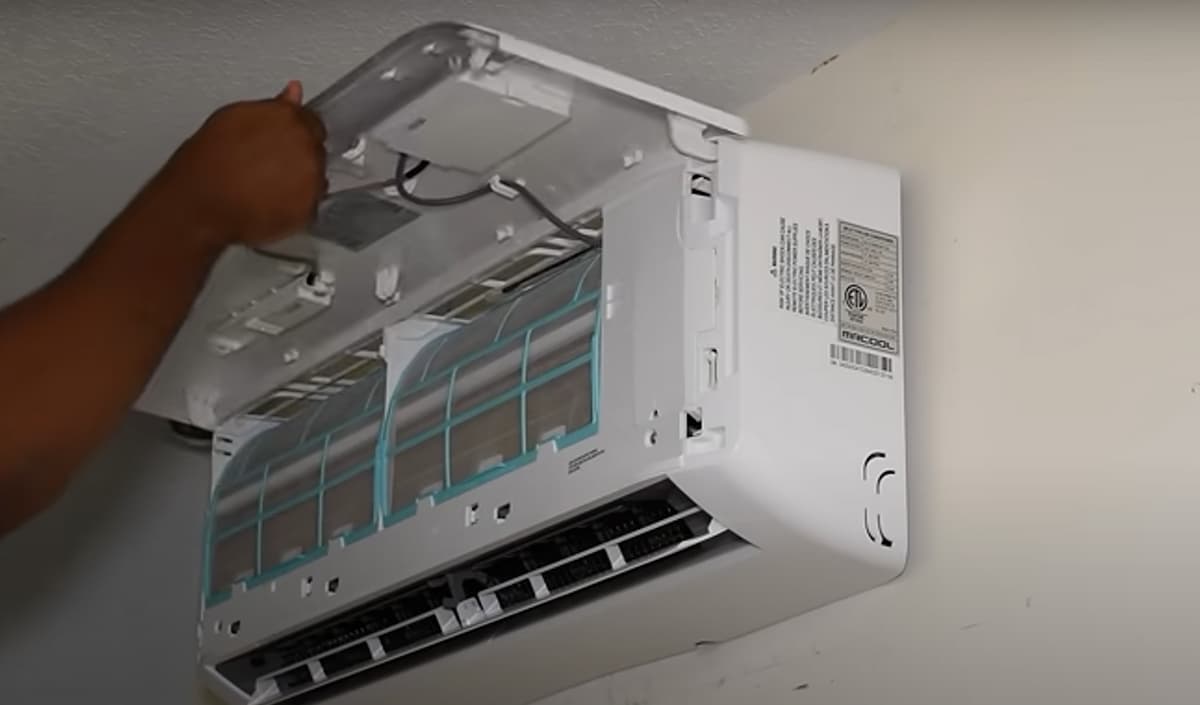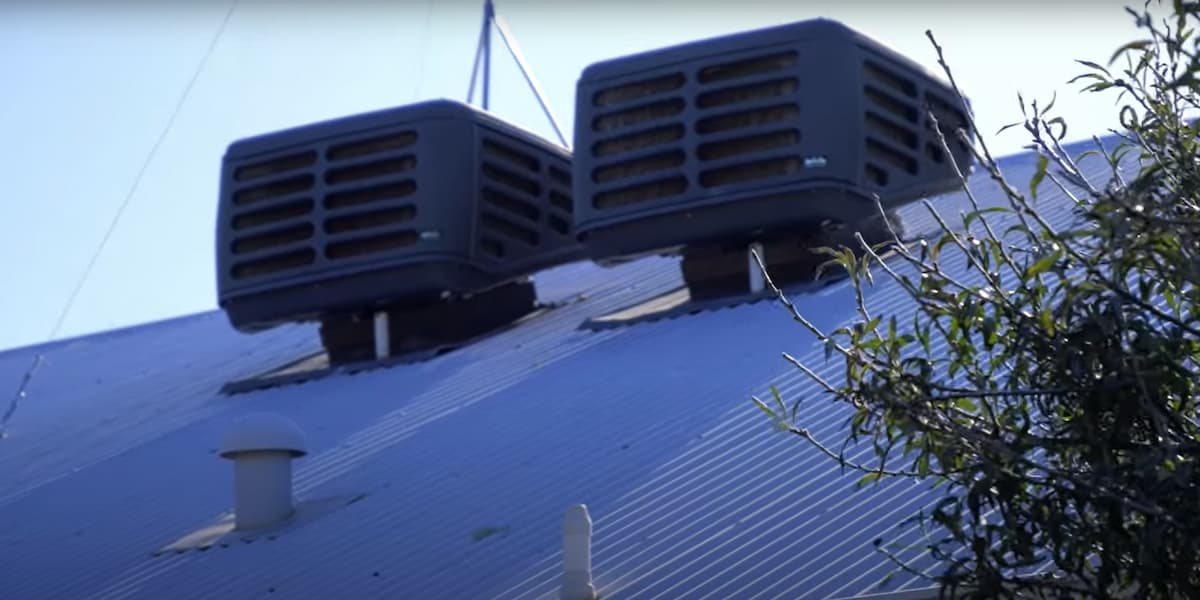
A reverse cycle air conditioner is a type of air conditioning system that can be used either to provide heating or cooling, depending on the time of year and the need. There are three main types of units:
- split systems
- packaged systems
- ductless systems.
These units use various methods for transferring heat from one place to another. Some work by drawing cool outdoor air through a filter into an indoor coil filled with refrigerant gas, others have two coils in different parts of the room so that warm air moves between them as it transfers its heat. The third type works by blowing heated or cooled air over evaporator coils located inside your home. All these systems rely on reversing the flow of refrigerant through the coils, which moves heat in a different direction.
What is Reverse Cycle Air Conditioning?
Reverse cycle air conditioning is a type of cooling system where the refrigerant undergoes a process whereby it is circulated in the opposite direction compared to regular split-type or window systems. This means that instead of bringing heat from outside and dumping it inside, like in standard HVAC systems, an indoor unit (evaporator) absorbs heat from indoors and transfers it outside.
As such, the process is reversed, during summer months when we need cooling, we hook up our units to expel heat into hot climates, come wintertime we turn on the heat pump with the intention of sucking cold air and pumping out warmth for cozy indoor environments. The key component in all heating and cooling systems, be they central air conditioners or window units, is something called a refrigerant.
Reverse Cycle Air Conditioners Storage
A refrigerant can “store” heat as it changes phases between liquid and gas, that’s why we use them to cool down hot spaces during summer months. In most split-type air conditioning systems, this refrigerant evaporates at high pressure through an indoor coil. The refrigerant absorbs the temperature from the room as it quickly converts from a gas to a liquid state before evaporating again at lower pressure through an outdoor coil. The hot, moist air is then evacuated out of the building and the whole process starts over again.
Benefits of Using Reverse Cycle Air Conditioning
Reverse cycle air conditioning offers a number of benefits over regular air conditioners, the most important of which is versatility.
During the summer months, these units can be used to draw cool air from outside and push it inside thus removing any hot air that has accumulated in a room. This way you get a cooler room without having to use an exhaust fan on your window unit all day long. In wintertime, the process works in reverse: instead of drawing warm air from indoors and dumping it outdoors, we pull cold outdoor air into the indoor evaporator coil through a filter while transferring heat from outside into our indoor environment. To achieve this reversal of flow, both split-type and ductless systems rely on reversing the normal direction of refrigerant flow within the system
In addition to this, many homeowners appreciate being able to control their unit from a single remote control, as is possible with a ductless mini-split. Central air conditioners require a manual switch for each window unit and some even demand direct access to the outdoor coils, which complicates installation.
How does Reverse Cycle Air Conditioning Work?
The first type of heating and cooling system that needs reversing the process of the normal air conditioner is called split-system cooling (or “reverse cycle system” or “heating-only” air conditioning), which is what we use in most homes throughout Australia. A reverse cycle air conditioner has an indoor evaporator coil and an outdoor compressor/condenser coil. When it’s time to cool down your home, the process works as follows.
To turn reverse cycle air conditioners on and allow them to start cooling your indoor environment, you flip a switch which allows the compressor to begin compressing and condensing the refrigerant. The pressure increases as heat is added to the compressor’s metal fins, evaporating the liquid refrigerant. This high-pressure gas flows back indoors by way of a copper pipe called a “liquid line” and passes through an expansion valve that reduces its pressure significantly (from around 350 PSI or 24 bar down to about 60 PSI or 4 bar).

As it enters the indoor evaporator coil, ambient air blows past these cold metal coils and all that compressed heat begins to escape out into your living room. As the indoor air absorbs all of this heat, it is cooled before it passes through your evaporator coil and makes its way back outside.
Reverse Cycle Air Conditioning Split System
Reverse cycle split systems offer both heating and cooling, but there are limitations to their ability to cool when in reverse mode. This is because when you compress a gas it heats up, so even if you’re using “reverse flow” to expel heat into an outdoor environment that’s colder than your indoor one, the compressor may still be adding heat to whatever fluid runs through it. It doesn’t matter how cold the coils get either, during this time they’ll simply be doing their best to transfer heat from indoors into your home at any cost.
There are also additional power costs associated with the compressor. It’s an electrical device that may continue to run whenever you’d like to cool your home, whether or not it’s actually producing a cooling effect.
Why use Reverse Cycle Air Conditioners?
Heating during winter is another reason many homeowners choose to use reverse cycle air conditioners. This is because a reverse cycle system is often cheaper than running an additional heating system and during summer months you can also turn on your regular air conditioner without having to use your window units which draws hot air out of the house.
During the winter season, the process of heating up indoor spaces with reverse cycle air conditioning works in much the same way as cooling them does over summer. Instead of expanding and contracting the refrigerant though, we allow cold outdoor air into our home by connecting its compressor/condenser coils directly to our indoor evaporator coil (which remains indoors). To do this, all you need to do is switch off the power at your outdoor controller (usually situated at the compressor) and switch it back on again.
Reverse Cycle Systems Cooling
This causes all of that compressed cold air to begin cooling indoors, rather than outdoors as before. It loses all of its heat by passing across your indoor evaporator coil until it’s collected inside your indoor environment. A reverse cycle air conditioning system can be very effective for heating individual rooms, but if you have a large home with lots of open areas you could consider investing in a couple of smaller units instead of one larger one.
Disadvantages of a Reverse Cycle Air Conditioner
Since they don’t cool or heat evenly throughout the house, the split system reverse cycle air conditioner requires you to place their outdoor coils where they can receive direct sunlight during the winter months. This may ensure that your compressor doesn’t need to work overly hard by excessively cooling a very cold outdoor environment that is also exposed to direct sunlight.
The reverse cycle air conditioning unit cannot cool or heat 100% of your home evenly and efficiently, but they can still be a valuable addition during the winter months to prevent you from heating the whole house when all you need to do is make one room more comfortable. In the summertime, these reverse flow split system air conditioners allow you to automatically switch on your window units without wasting valuable energy, ensuring that each room gets exactly as cold as it needs to be.
Are Reverse Cycle Air Conditioning Systems Used in Australia?
Most Australian homes already have an air conditioning system installed, even if it only comprises of a single-window unit or two. During the winter months many households may turn on their heater instead and during summer they’ll switch back to cooling mode again, causing them to use double the amount of energy than necessary.
Compared with furnaces and evaporative coolers (swamp coolers), reverse cycle air conditioning systems are more expensive and often cost around $4000+ depending on the size of your home and what you need it to do for you. If you live in a region where electricity prices are very high then this could be a significant outlay that is impossible for some people to afford, but as time goes on these units become increasingly affordable as technology advances.
Many people decide to purchase a split system reverse cycle air conditioner to use as their main heating source during winter and cooling system during summer, rather than spending money on two systems that do the same thing.
Does Reverse Cycle Air Conditioning Use Water?
Not all air conditioning systems require water to work, but some do. A reverse cycle air conditioner is designed to use both refrigerant and coolant to ensure that your rooms are kept at the perfect temperature for you.
During the summer months, sensors within your home can detect when your rooms have become too warm and then activate the cold refrigerant. This is then sent through the outdoor coils (condenser) where it passes across a strong magnetic field.
Water may be used to humidify this dry cold air, but it isn’t collected by your reverse cycle air conditioner and maybe manually drained away into a sink or toilet. These units are becoming increasingly expensive, but worth every cent if you live in areas where heating costs are high due to climate conditions.





